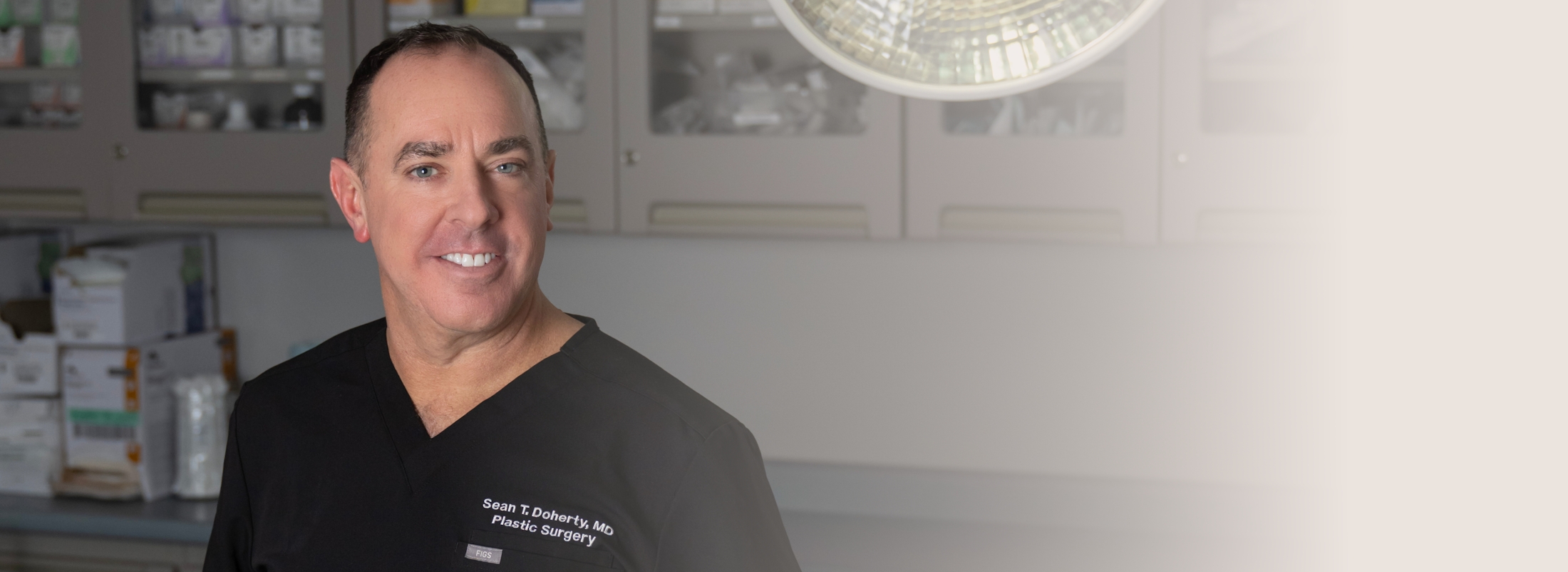
27 Oct 2025
Facial harmony is a real buzzword these days. Plastic surgeons, including myself, and the media use this phrase to describe the desired outcome of any good facial rejuvenation procedure. But what is facial harmony? Is the term just a marketing ploy or a real thing? As a double Board-Certified Facial Plastic Surgeon, I can say with total confidence that facial harmony is what facial rejuvenation is all about. However, achieving it is going to be different for everyone. Not only is your anatomy unique to you on a genetic level, but lifestyle choices such as sun exposure may have a huge effect on your aging process. I always take a highly precise, proportion-based approach when assessing and restoring facial harmony, particularly with a deep plane facelift or rhinoplasty, which are two of my areas of expertise. Here are some of the mathematical equations that I am analyzing in order to determine the best treatment plan for you.
Facial Thirds with Deep Plane Facelift in Boston
When you come in for your facelift consultation, I will listen to what bothers you about your appearance. We will consult photos of the “look” you are wanting to achieve, and I will conduct a thorough physical exam in which I divide your face vertically into thirds. These include the:
- Upper third: Hairline to glabella (spot between the brows)
- Middle third: Glabella to base of the nose
- Bottom third: Base of the nose to the chin
With age, we all lose balance between the different thirds of the face. My job is to assess exactly what needs to be done in order to lift and restore your facial features so that you look and feel more youthful, vital, and self-confident. One of the reasons that I am such a proponent of the deep plane facelift is that it allows me to do all of this without ever leaving you looking “done”. My end results are elegant and totally natural-looking. Furthermore, they’re also long-lasting as I’m working in the deepest planes of your face.
Eyes-Nose-Mouth Relationship
In addition to assessing your face vertically, I am also looking at your facial features, specifically the eyes-nose-mouth, both individually and in relation to one another. In a perfect world, your eyes should be one eye width apart, and your nasal bridge should flow naturally between the brows, aligning with the center of your philtrum, which is the mid-line groove above the lips. With the mouth, my aim is for the outer edges to align with your pupils or medial edge of the iris. I am also taking into account your smile dynamics. How do your nose and lips move when you smile? This can be particularly critical with rhinoplasty planning as we want to prevent tip droop or lip distortion.
Ratio of Chin and Jawline
In the bottom third of the face, I create a balanced profile by making sure that your chin aligns with or slightly trails a vertical line from your lower lip. It also has to be in proper relationship to your nose. Oftentimes, a subtle chin augmentation with either an implant or dermal fillers can be a nice complement to a rhinoplasty. In terms of the jawline, it’s all about creating an appropriate contour. I will look at the mandibular angle definition and how the skin on your neck will drape post facelift. My goal is to lift and rejuvenate while also maintaining your natural shadow lines. This is one of the elements that keeps others asking where you went on vacation as opposed to what you had done.
Mid-Face Volume and Soft Tissue Balance
Although sagging skin gets the predominant part of the attention when it comes to facial aging, it is not the only culprit. Volume loss, particularly in the mid-face, is also a huge component of an aging face. Before we ever step foot in the operating room, I have thoroughly evaluated your:
- Malar projection or prominence of the cheekbones
- Tear trough depth
- Nasolabial folds
I will use 3-D imaging and photo analysis in order to visualize exactly how subtle volume enhancement with an appropriate dermal filler or fat grafting can help augment your deep plane facelift results. In short, nothing on your face exists in isolation so the job of facial rejuvenation is to restore homeostasis between all of your features.
Why Rhinoplasty is Never One Size Fits All
As discussed, proportional harmony is often about adjusting the chin, mid-face, and nose. The latter can be critical as it occupies the middle of your face. This is why rhinoplasty is such a powerful procedure. When I am assessing your nose, I am looking at the following:
- Nasofrontal angle (forehead to nose)
- Nasolabial angle (nose to upper lip)
- Nasal width vs. intercanthal distance
- Tip rotation & projection
The ideal nasofrontal angle is 115° to 130°. You don’t want the angle to be overly deep as it can make your nose appear too long and harsh. For the nasolabial angle, the ideal differs by sex. For women, it’s 95° to 105° while for men, it’s 90° to 95°. When it comes to nasal width, I want to align the nostrils vertically with the inner corners of your eyes. And the nasal tip should project about 60% of the length of your nose and rotate slightly upwards. All of these measurements help to create the most natural looking contour for your face.
Contact Us
To find out more about a deep plane facelift, rhinoplasty, or any other surgical or non-surgical procedure with Dr. Akshay Sanan at the Boston Center for Plastic Surgery, contact us today or call (617) 402-2768 to schedule a consultation.
